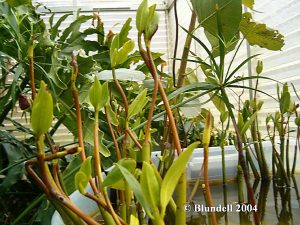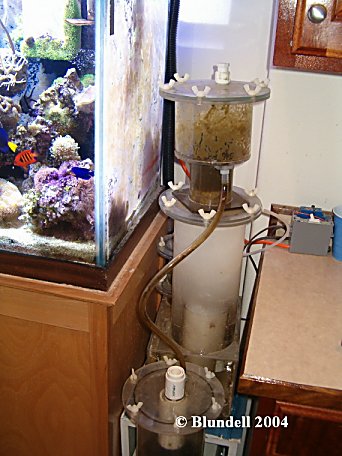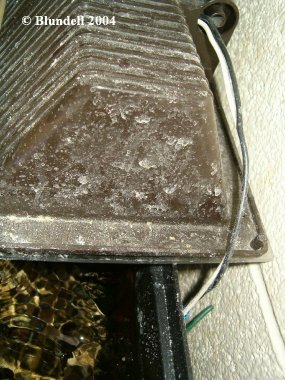Reef aquarium filtration has come a long ways in the past two decades. The advancements are great enough to warrant discussions and explanations on what we now use for
filtration. From humble beginnings to complex (and often pricey) filtration systems there is now more than ever before a need to review the products and concepts behind filtration methods.

Sand beds are currently the most popular form of filtration media in today’s reef aquariums.

Background
Reef aquarium filtration is often divided into two categories for ease of conversation. The differentiation is usually in regards to whether the filtration (be it device or concept) has a greater focus on biological breakdown of waste or a greater focus on the removal of waste. These two facets being commonly known as “biological filtration” and as “mechanical filtration” respectively. This classification is admittedly easy to use and generic when conversing with other hobbyists. However, I would like to propose another classification system which categorizes filtration methods as “recycling” and “removing” methods. I will come back to this concept in a later publication.
Current filtration methods for reef aquaria include the following items: undergravel filter, hang on filters, canister filters, Protein Skimmers, algal turf scrubbers, Live Rock, live sand, terrestrial rock, terrestrial sand, UV sterilizers, filter floss, filter pads, filter socks, algal growth, corals (including non reef building), anemones, Water Changes, sponges (living and non-living), gravel/water siphoning, fish, crabs, shrimp, sea stars, urchins, mangroves, and more. Wow isn’t that a lot of stuff? In order to review all of these items I’m going to divide them into the two common categories.

| Mechanical Filtration | Biological Filtration |
|---|---|
| Hang On Filters | Live Rock |
| Protein Skimmers | Live Sand |
| Water Changes | Macro Algae |
| Canister Filters | Clean Up Crews |
| Filter Socks | Micro Crustaceans |

Mechanical Filtration
I’ll start with this because it is usually simple to understand and familiar to most hobbyists. Mechanical filtration is typically carried out by a device you purchase. This can be a very cheap filter sock to a very expensive protein skimmer.
The whole concept is to remove waste particles from the aquarium before they have a chance to break down into smaller organics. If that doesn’t make sense, please go back and read that sentence again. The idea is to remove and thus prevent a build up of organics in the system.
For 10 years now as biological filtration has dominated the hobby, the usage and understanding of mechanical filtration has plummeted. This may not be a bad thing, but it may generate a false sense of security as aquariums continue to build their organic loads and reach a maximum capacity.

The pro’s to these items center around effectiveness. Nearly all of the mechanical filtration devices for purchase do in fact work. A filter sock really does catch and remove things that flow through it, and an intake sponge does as well. The con’s to such devices focus on three aspects (that I can think of). First of all in order to work these devices require effort on the part of the hobbyist. The filter gests clogged, the pump intake is overgrown with algae, the filter sock gets dirty, and needless to say “somebody has to take out the trash” in a manner of speaking. In other words if you don’t think your filter is really working, try cleaning it out and I’ll bet it works a lot better. The second con or complaint about such devices is the cost. No argument here. You do have to buy them, or you do have to buy replacement parts. The third commonly cited down side to mechanical filtration is “why buy something you don’t need?”. That indeed is a great question, if it holds true. I’ll discuss this in the next section.
Biological Filtration
This is the newly found and booming area of reef aquaria filtration. For over a decade now this has been the rage. The addition of live rock to salt water fish tanks may have been the greatest trend to ever hit the hobby. The basic principle with biological filtration is to take waste particles and break them down by safely by biological means. I guess you could say the idea is to break them down where they won’t cause problems, but I prefer to think of it in another way. My vision of this is to add more animals to the ecosystem which use these “waste
products” as a food source. Much like one man’s garbage is another man’s treasure type of philosophy. Explaining this to a new hobbyist is often difficult. Try telling someone that their tank is polluted and really needs more bugs and bacteria to make it better.
Regardless of how you explain or define it, the idea is to use living organisms to break down and consume waste products so that they don’t just break down into free floating or dissolvable organics. In my mind live rock and live sand are the undoubted champions of biological filtration. The surface area, water channels, bacterial load, and protected shelters offer a vast amount of biological activity. Additionally corals an excellent filtration tool in reef aquaria. Direct feeding and diffused intake of organics allows corals to grow. This feeding method directly removes matter from the water column and converts it into something else. A great aspect of this is that the “something else” it converts waste into happens to be a desirable product, namely coral growth.

Sand beds vary in design. Two main principles are substrate depth and substrate composition. Shown here is a deep sand bed, and also a sand bed comprised of black sand and coralline encrusted shells.

Another area of nutrient removal is macro algae. This concept has also been a booming success for 10 years as refugia have flourished in the area of home aquaria. The idea here is to grow algae (usually very beautiful and appealing in variety) as a way to remove nutrients. As the algae grows it removes nutrients, and the algae also serves as a food source for fishes and as a breeding ground for invertebrates.
Cons to biological filtration are rarely mentioned. The first downside is that biological filtration never removes nutrients from the aquarium. Therefore as long as you are feeding your fish and your corals you will be increasing the nutrient load of the aquarium. This can be related to the golden rule of gardening “put in what you take out, take out what you put in”. If you are not harvesting your aquarium you are accumulating matter in the system.
This may not be a problem if the fish and corals are growing, but they certainly are not growing at the rate of input by even the stingiest feeder. The second downside to biological filtration is really just an indirect trend. With the increased understanding and usages of biological filtration too often we forget about mechanical filtration. I’m not just referring to a short time affair but instead on global and long term setting. For 10 years now as biological filtration has dominated the hobby, the usage and understanding of mechanical filtration has plummeted. This may not be a bad thing, but it may generate a false sense of security as aquariums continue to build their organic loads and reach a maximum capacity. Upcoming presentations and publications (most notably by the wonderful Julian Sprung) will explore these ideas.
Conclusion
Both mechanical and biological filtration serve a role in the reef aquaria hobby. Often times a hobbyist will focus on one area/concept and will underestimate the need for the other. While effective on their own, in conjunction obviously appears to be a more effective overall method. It is important for a hobbyist to identify which filtration methods they are using and how those methods are contributing to the health of their system.

Coral growth is certainly one of the more desired filtration methods of most hobbyists.
References and Suggested Readings
- Blundell, A., Finch., J., (2004) “Oolitic Sand Analysis”.

Pictured here is an example of macro algae used as decoration, food, and filtration in the main tank display area.
 http://www.advancedaquarist.com/issues/feb2005/short.html , Advanced Aquarist Online Magazine, USA. Pro, S., (2004) “Protein Skimmer Impressions”. http://www.wetwebmedia.com/ca/cav1i1/protein_skimmer_impressions.htm , Conscientious Aquarist, USA.
http://www.advancedaquarist.com/issues/feb2005/short.html , Advanced Aquarist Online Magazine, USA. Pro, S., (2004) “Protein Skimmer Impressions”. http://www.wetwebmedia.com/ca/cav1i1/protein_skimmer_impressions.htm , Conscientious Aquarist, USA. - Pro, S., (2004) “Power Filter Impressions”. http://www.wetwebmedia.com/ca/cav1i2/Equipment/filters.htm , Conscientious Aquarist, USA.
- Pro, S., (2005) “Canister Filter Impressions”. http://www.wetwebmedia.com/ca/volume_2/cav2i1/canister_filters/Canister_filters.htm
, Conscientious Aquarist, USA.

Shown here is a “hang on the back” filter which has been converted into a hang on refugium. This is an example of combining a mechanical filter with a biological filter.



0 Comments